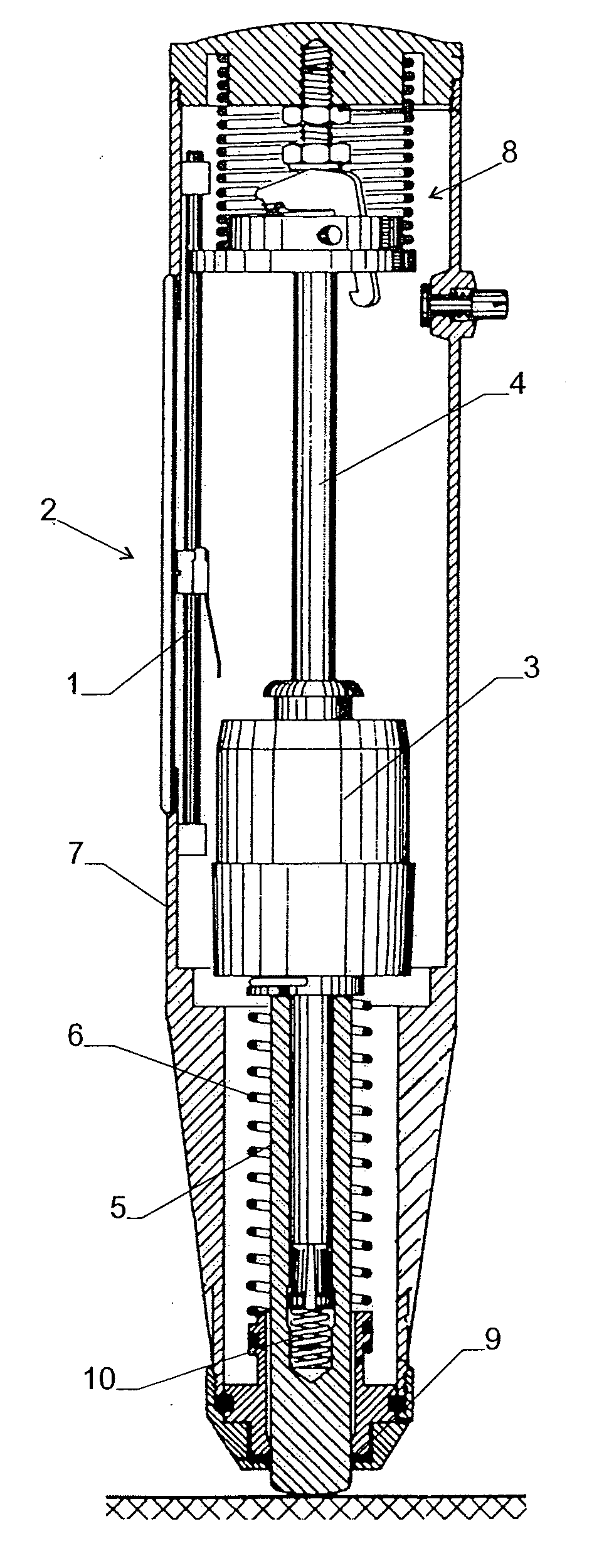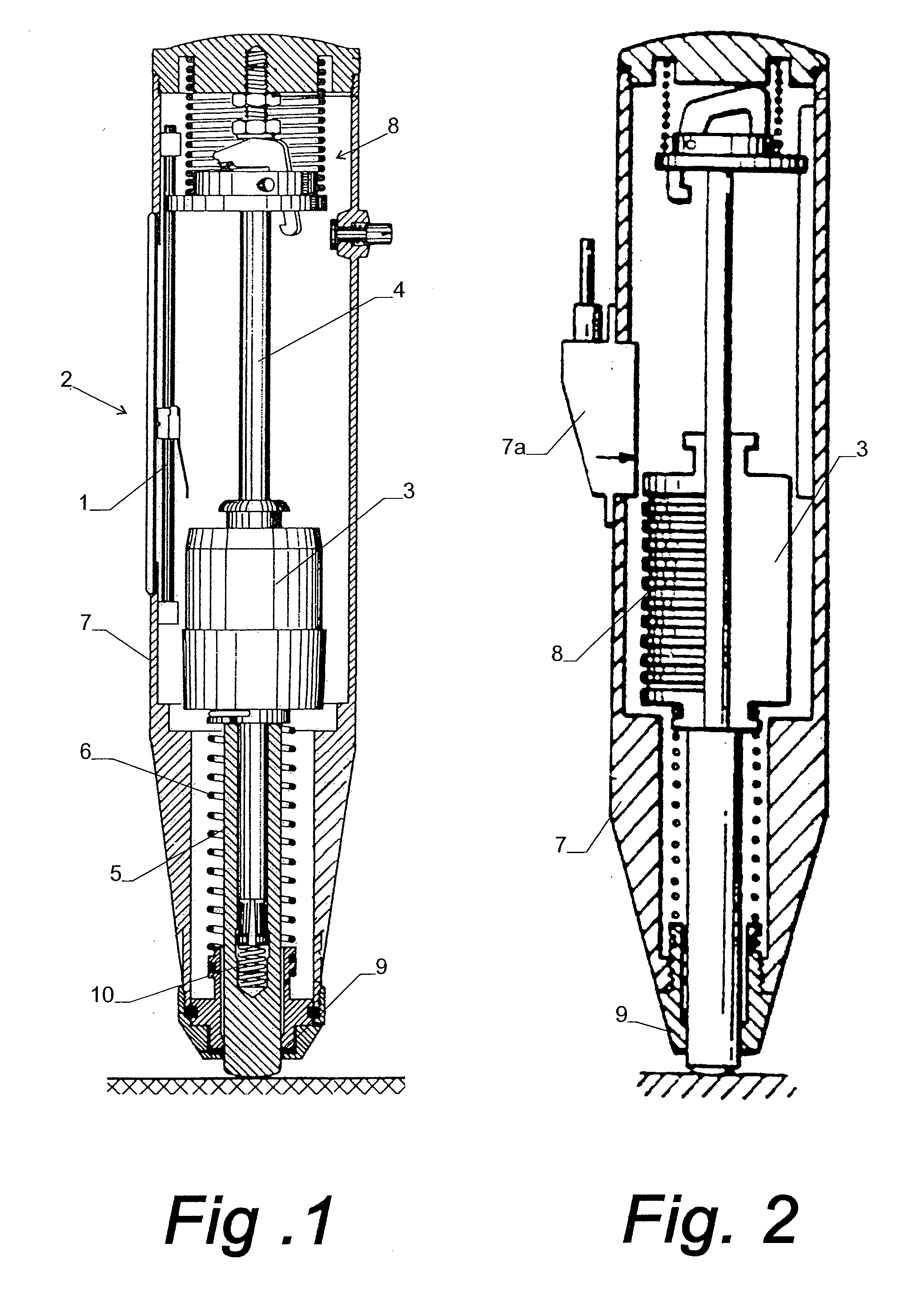Method and apparatus for the non-destructive measurement of the compressive strength of a solid
a non-destructive measurement and compressive strength technology, applied in the direction of measuring devices, scientific instruments, instruments, etc., can solve the problems of error in the bound velocity, and achieve the effect of increasing the accuracy of the instrument, reducing the sensitivity of the device, and reducing the time span for gravity to a
- Summary
- Abstract
- Description
- Claims
- Application Information
AI Technical Summary
Benefits of technology
Problems solved by technology
Method used
Image
Examples
Embodiment Construction
[0042]FIG. 4 shows the relevant parts of an advantageous embodiment of the device at the time of impact. The housing has been omitted for simplicity (FIG. 6 shows the complete hammer unit). We note the mallet 3, which travels along an axis A on a guide rod 4 and impinges on the plunger 5 drawn by the impact spring 6, with impact spring 6 acting as a drive mechanism for driving mallet 3 against plunger 5. These parts are virtually identical to the classic implementation as e.g. described in U.S. Pat. No. 5,176,026. However, the mass of the mallet 3 is now reduced to match the mass of the plunger. This is to ensure that the energy of the mallet is transferred to the plunger in one single blow, when it travels toward the plunger and from the plunger to the mallet upon return. In the classic unit there are multiple contacts of a random number, whereby a part of the energy is lost. Further advantages of this design have been described above.
[0043]Note that the impact spring 6 is the same...
PUM
| Property | Measurement | Unit |
|---|---|---|
| areas | aaaaa | aaaaa |
| compressive strengths | aaaaa | aaaaa |
| compressive strength | aaaaa | aaaaa |
Abstract
Description
Claims
Application Information
 Login to View More
Login to View More - R&D
- Intellectual Property
- Life Sciences
- Materials
- Tech Scout
- Unparalleled Data Quality
- Higher Quality Content
- 60% Fewer Hallucinations
Browse by: Latest US Patents, China's latest patents, Technical Efficacy Thesaurus, Application Domain, Technology Topic, Popular Technical Reports.
© 2025 PatSnap. All rights reserved.Legal|Privacy policy|Modern Slavery Act Transparency Statement|Sitemap|About US| Contact US: help@patsnap.com



